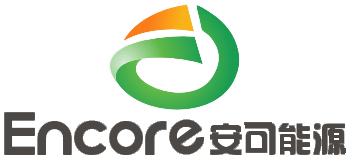- English
- Español
- Português
- русский
- Français
- 日本語
- Deutsch
- tiếng Việt
- Italiano
- Nederlands
- ภาษาไทย
- Polski
- 한국어
- Svenska
- magyar
- Malay
- বাংলা ভাষার
- Dansk
- Suomi
- हिन्दी
- Pilipino
- Türkçe
- Gaeilge
- العربية
- Indonesia
- Norsk
- تمل
- český
- ελληνικά
- український
- Javanese
- فارسی
- தமிழ்
- తెలుగు
- नेपाली
- Burmese
- български
- ລາວ
- Latine
- Қазақша
- Euskal
- Azərbaycan
- Slovenský jazyk
- Македонски
- Lietuvos
- Eesti Keel
- Română
- Slovenski
- मराठी
- Srpski језик
What is the charging and discharging principle of lithium iron phosphate battery?
2022-11-29
Lithium iron phosphate battery is a lithium ion battery with lithium iron phosphate (LiFePO4) as the negative electrode material and carbon as the negative electrode material. The rated voltage of the single battery is 3.2V, and the charging cut-off voltage is 3.6V~3.65V
During the charging process of lithium iron phosphate battery, some lithium ions of lithium iron phosphate escape and enter the cathode through the electrolyte to embed the cathode carbon material. At the same time, electrons are released from the anode to reach the cathode from the external control circuit to keep the balance of chemical reaction. In the discharge process, lithium ions escape through magnetic force and reach the anode through electrolyte, while electrons released from the cathode reach the anode through external circuits to provide energy to the outside.
The development of lithium iron phosphate battery has the advantages of high voltage, high energy density, long cycle life, good safety technical performance, low self discharge rate, no memory and so on.
In the crystal structure of lifepo4, oxygen atoms are closely arranged into six letters. PO43 tetrahedron and FeO6 octahedron form a spatial structure skeleton of crystal. Li and Fe occupy the gaps of these octahedrons, P occupy the tetrahedron through the gap, where Fe occupies the common angular position with octahedron, and Li occupies the covariant position of each octahedron. The octahedrons of Feo6 are connected on the bc plane of the crystal, and the octahedrons of lio6 on the b axis are connected by a chain structure. One FeO6 octahedron, two LiO6 octahedrons and one PO43 tetrahedron. The total octahedral network of FeO6 is discontinuous, so it cannot form electronic conductivity. On the other hand, the volume of PO43 tetrahedron restricted lattice changes constantly, which affects Li ablation and electronic diffusion, thus leading to the extremely low level of electronic conductivity and ion diffusion utilization efficiency of LiFePO4 cathode materials.
Lithium iron phosphate battery has a high theoretical capacity (about 170mAh/g) and a discharge platform of 3.4V. Li flows back and forth between the anode and anode, charging and discharging. During charging, oxidation technology reaction occurs, and Li escapes from the anode. By analyzing the electrolyte embedded in the cathode, iron changes from Fe2 to Fe3, and chemical oxidation system reaction occurs.
The charge discharge reaction of lithium iron phosphate battery takes place between lifepo_4 and fepo_4. During the charging management process, LiFePO4 can form FePO4 by breaking away from traditional lithium ions, and during the discharge development process, LiFePO4 can be formed by increasing lithium ions by embedding FePO4.
When the battery is charged, lithium ions move from lithium iron phosphate crystal to the crystal surface, enter the electrolyte under the effect of electric field force, pass through the film, and then move to the surface of graphite crystal through the electrolyte, and then embedded into the graphite crystal lattice.
On the other hand, the electronic information flows through the conductor to the aluminum foil collector of the anode through the lug, the anode pole used by the battery, the external control circuit, the cathode, the cathode lug and the copper foil collector of the battery cathode, and flows to the Chinese graphite cathode through the conductor. The charge balance of the cathode. When lithium ion is dephased from lithium iron phosphate, lithium iron phosphate is converted into iron phosphate. When the battery is discharged, lithium ions are stripped from the black junction crystal and enter the learning electrolyte. Then, they can be transferred to the surface of lithium iron phosphate crystal through the membrane, and then embedded into the lattice of lithium iron phosphate by analyzing the electrolyte solution.
During the charging process of lithium iron phosphate battery, some lithium ions of lithium iron phosphate escape and enter the cathode through the electrolyte to embed the cathode carbon material. At the same time, electrons are released from the anode to reach the cathode from the external control circuit to keep the balance of chemical reaction. In the discharge process, lithium ions escape through magnetic force and reach the anode through electrolyte, while electrons released from the cathode reach the anode through external circuits to provide energy to the outside.
The development of lithium iron phosphate battery has the advantages of high voltage, high energy density, long cycle life, good safety technical performance, low self discharge rate, no memory and so on.
In the crystal structure of lifepo4, oxygen atoms are closely arranged into six letters. PO43 tetrahedron and FeO6 octahedron form a spatial structure skeleton of crystal. Li and Fe occupy the gaps of these octahedrons, P occupy the tetrahedron through the gap, where Fe occupies the common angular position with octahedron, and Li occupies the covariant position of each octahedron. The octahedrons of Feo6 are connected on the bc plane of the crystal, and the octahedrons of lio6 on the b axis are connected by a chain structure. One FeO6 octahedron, two LiO6 octahedrons and one PO43 tetrahedron. The total octahedral network of FeO6 is discontinuous, so it cannot form electronic conductivity. On the other hand, the volume of PO43 tetrahedron restricted lattice changes constantly, which affects Li ablation and electronic diffusion, thus leading to the extremely low level of electronic conductivity and ion diffusion utilization efficiency of LiFePO4 cathode materials.
Lithium iron phosphate battery has a high theoretical capacity (about 170mAh/g) and a discharge platform of 3.4V. Li flows back and forth between the anode and anode, charging and discharging. During charging, oxidation technology reaction occurs, and Li escapes from the anode. By analyzing the electrolyte embedded in the cathode, iron changes from Fe2 to Fe3, and chemical oxidation system reaction occurs.
The charge discharge reaction of lithium iron phosphate battery takes place between lifepo_4 and fepo_4. During the charging management process, LiFePO4 can form FePO4 by breaking away from traditional lithium ions, and during the discharge development process, LiFePO4 can be formed by increasing lithium ions by embedding FePO4.
When the battery is charged, lithium ions move from lithium iron phosphate crystal to the crystal surface, enter the electrolyte under the effect of electric field force, pass through the film, and then move to the surface of graphite crystal through the electrolyte, and then embedded into the graphite crystal lattice.
On the other hand, the electronic information flows through the conductor to the aluminum foil collector of the anode through the lug, the anode pole used by the battery, the external control circuit, the cathode, the cathode lug and the copper foil collector of the battery cathode, and flows to the Chinese graphite cathode through the conductor. The charge balance of the cathode. When lithium ion is dephased from lithium iron phosphate, lithium iron phosphate is converted into iron phosphate. When the battery is discharged, lithium ions are stripped from the black junction crystal and enter the learning electrolyte. Then, they can be transferred to the surface of lithium iron phosphate crystal through the membrane, and then embedded into the lattice of lithium iron phosphate by analyzing the electrolyte solution.
At the same time, the electrons flow through the conductor to the cathode copper foil collector, to the battery cathode, external circuit, anode, anode to the battery anode aluminum foil collector, and then to the lithium iron phosphate anode through the conductor. The two polar charges are balanced. Lithium ions can be inserted into an iron phosphate crystal, and iron phosphate is converted into a lithium iron phosphate.



